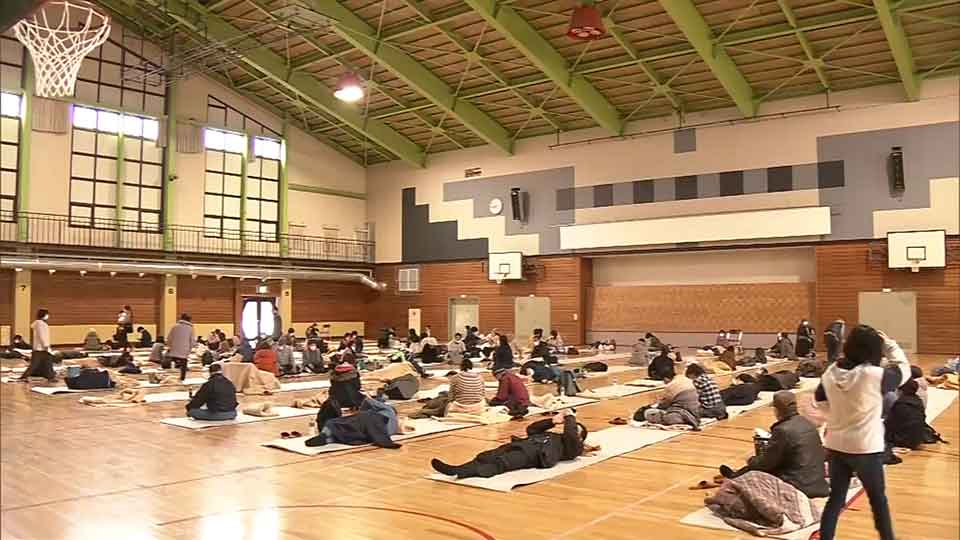In March, heavy rains sparked flooding in Shibecha Town, Hokkaido, and officials were forced to issue an evacuation order to residents. It couldn’t have come at a worse time for a community already in the grip of the coronavirus outbreak.
Hokkaido’s Governor had already declared a state of emergency over the outbreak, so when people needed to flee their homes, Shibecha officials had to improvise.
At a gymnasium that was being used as a shelter, the officials marked two-meter intervals on the floor with tape and asked evacuees to maintain the distance from each other at all times.
Ito Masaaki, who oversaw the operation, said they were lucky that only a small number of people turned up, and nobody was infected. But he says the experience was a wakeup call that revealed the challenges ahead.
“I realized that just installing normal shelters won’t be enough to prevent the spread of infections.”

An influenza outbreak
That’s something officials in Miyagi Prefecture know from bitter experience. Nine years ago, after the devastating March 11 earthquake and tsunami, about 200 people took shelter in a school gymnasium in the city of Natori. One of the evacuees was found to be suffering from influenza, and the virus swept through the shelter.
Local officials turned to Endo Shiro, an infectious disease expert from the Tohoku Medical and Pharmaceutical University, for help. He visited the shelter and brought the outbreak under control. But he says this was only possible because they had medicine to treat influenza and reliable testing methods. Neither of these things are true with the coronavirus.
“Multiple evacuations”
Authorities in Tokyo’s Adachi Ward, home to about 700,000 people, have been planning for this summer’s typhoons and they’ve come up with a measure they hope will make sheltering safer. They’re calling it “multiple evacuation”.
The idea is to give residents several options of places to go, in addition to the usual government-designated shelters.
In low flood risk areas, officials will advise people to stockpile a week’s worth of food and disposable sanitation bags, and stay home in the event of a typhoon. Elsewhere, they have negotiated deals with local companies to open up their offices, with meeting rooms and hallways to serve as shelters.
Prime Minister Abe Shinzo says the national government will be as ready as possible.
“We will set up as many shelters as we can, making the best use of hotels and other places,” he said in a news conference on May 25. “We will also be fully prepared to quickly support evacuees by providing necessary items such as masks without waiting for local government requests.”
Traditional evacuation shelters, with people sleeping in close quarters, low to the floor, make it all but impossible to avoid the “three Cs”: closed spaces with insufficient ventilation, crowded conditions, and conversations in close proximity. Authorities have just weeks to ensure their evacuation strategies don’t compound a natural disaster by sparking a coronavirus cluster.


